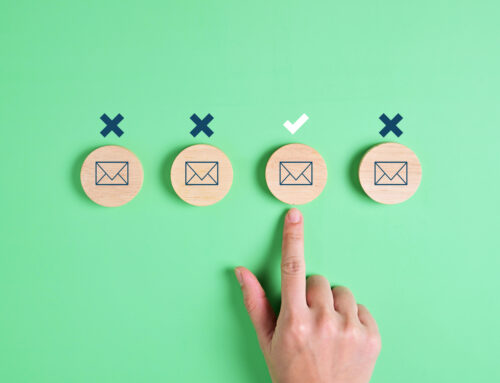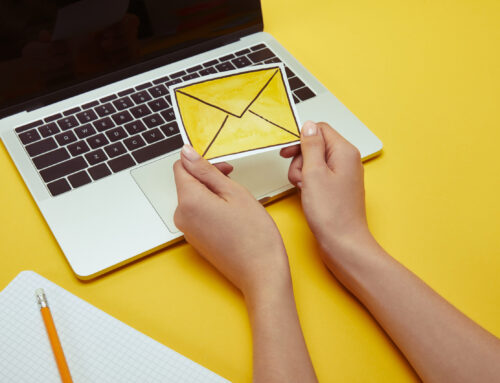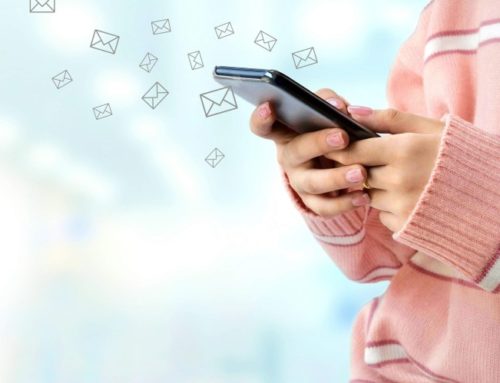
Only about a quarter of nonprofits have an email welcome series, according to our research in the Nonprofit Communications Trends Reports.
That’s a shame because a nonprofit email welcome series is a great way to get early engagement with new subscribers (in other words, getting them to click on those first emails). That signals that they really do belong on your list and want your content. And that means you are more likely to appear in their inboxes rather than in a tab or spam.
Your Best Content for Your Email Welcome Series
We recommend that you focus on five different types of content in your nonprofit’s email welcome series. You don’t have to include all five elements! But these are the types of content to consider as you draft your welcome series.
Content that . . .
- Makes people feel good: stories, ways to express their values, and knowing that others feel the same
- Is helpful to them: checklists, downloads, top posts
- Connects them with others: invitations, events, introductions to key people, social media connections
- Allows you to get to know them better: by setting email preferences, surveys, polls, quizzes
- Makes acting quick and easy: simple calls to action that directly help the cause
This type of content is great for all kinds of emails you send, including newsletters. But it’s especially nice in a welcome series.
Because I know so few nonprofits are using a welcome series, and I know you don’t have much time, I’ve written six different welcome series, each with three emails.
Below you’ll find one of the nonprofit email welcomes series templates I call the “Feel, Think, Do” template.
Folks with an All-Access Pass to Nonprofit Marketing Guide get access to all six templates and to a webinar recording on how to write a great nonprofit welcome series that will engage and retain supporters.
The “Feel, Think, Do” Nonprofit Email Welcome Series Template
In this Welcome Series, you’ll use calls to action encouraging people to feel good, think about your issue, and do something to help.
These are fill-in-the-blank style, so replace or delete anything in [brackets like this.] I’ve written in a very conversational style appropriate for email, but you should play with the style and tone as you see fit.
Email 1 — The Feels:
Hello [insert your merge code for first name],
I’m so glad to see that you’ve joined our mailing list! That tells me that you really care about [fill in the blank, e.g., saving the whales, finding a cure].
That’s so important, because with people like you on our team, we can [fill in the blank with mission-oriented actions like protect whales and other sea life too, support research that will bring an end to this disease.]
I want to share a story with you to show you what I mean.
[Insert the first part of a story or a video to get them to click to the rest of the story or the video. This should be a personal story that demonstrates the impact of your work and that will make them FEEL really good about supporting you.]
Isn’t that amazing?
I’ll write again soon with some tips I think you might find helpful in your own life.
But in the meantime, if you have any questions, just hit reply! [If you include this, make sure the reply inbox is monitored. Replies are great for engagement, but if you don’t want replies, you can direct them to follow on social media instead.]
[Insert preferred salutation]
[Insert From Name, Title, Organization]
Email 2: The Thinking / Helpful Resource
Hi [insert your merge code for first name],
Since you care so much about [fill in the blank, e.g., saving the whales, finding a cure], I think you’ll find this really useful.
We’ve put together a [guide, tip sheet, top ten list, something useful] to help you [make decisions in your own life, avoid something, do something better — whatever makes sense given the resource you are sharing.]
It may seem small, but when we all do small things together, it adds up to something huge. I’m so glad you’ve decided to be a part of that change!
If you have any questions, just hit reply! [If you include this, make sure the reply inbox is monitored. Replies are great for engagement, but if you don’t want replies, you can direct them to follow on social media instead.]
[Insert preferred salutation]
[Insert From Name, Title, Organization]
Email 3: The Doing
Hi [insert your merge code for first name],
I’ve got something else you can do to help [fill in the blank, e.g., save the whales, find a cure].
And this one is really important.
How would you feel about [fill in your final call to action, such as becoming a monthly donor, or signing up for volunteer training].
When you [become a monthly donor or a volunteer or whatever based on your CTA], you make it possible for [fill in the blank with anticipated meaningful result, e.g. us to keep the pressure on governments who need to do more to protect the whales, give hope to people diagnosed with disease while funding research for a cure].
[Add a single line here, repeating the call to action with a link to form].
Once again, welcome to our community of people working every day to [save the whales, cure the disease].
Please feel free to get in touch anytime with questions.
[Insert preferred salutation]
[Insert From Name, Title, Organization]
See, it’s not that hard to write a conversational email welcome series that will get engagement as soon as someone gets on your list!
Remember, our All-Access Pass Holders get access to five more templates that take different approaches to writing a nonprofit email welcome series.






